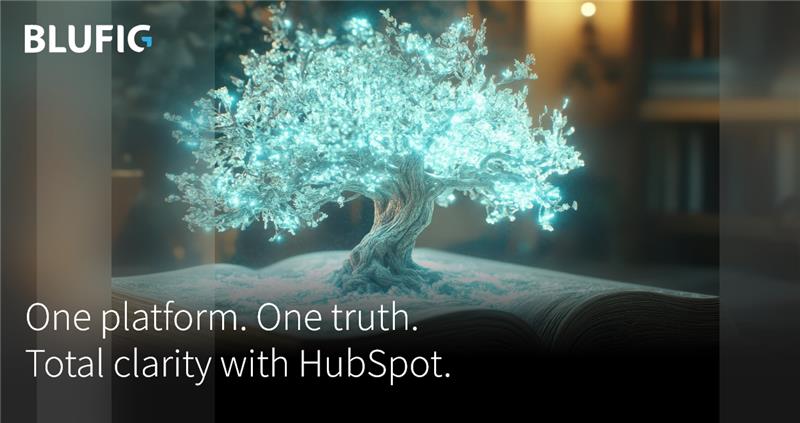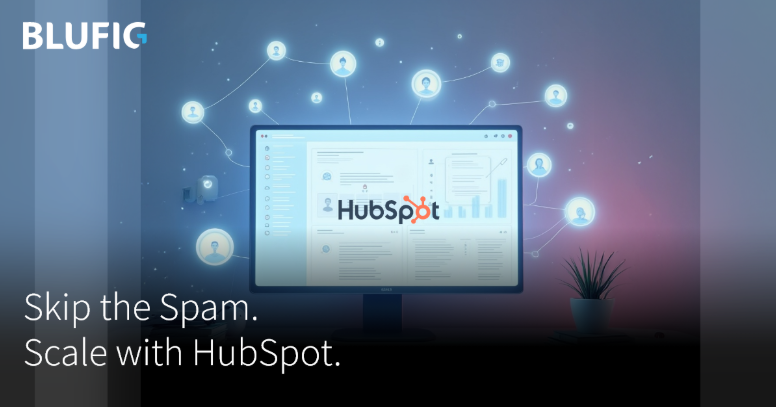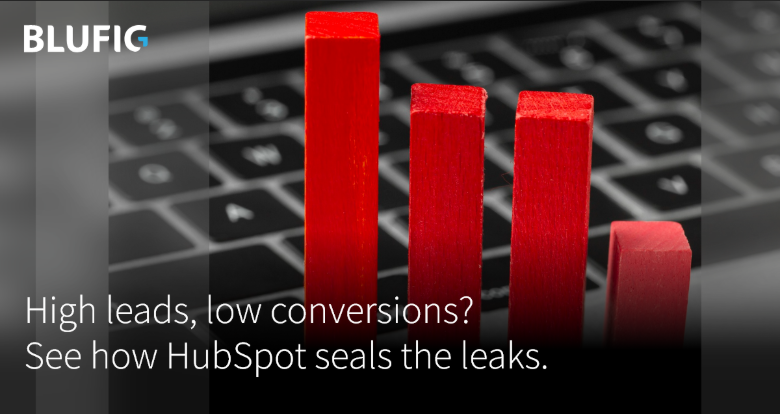Performance marketing a.k.a Paid acquisitions have become an integral part of modern-day marketing. While organic channels promise you long term visibility and conversions; Performance marketing provides you instant gratification in terms of leads and customer acquisitions.
Increasing competition and evolving customer expectations present new challenges to marketers in terms of customer segmentation for your demand-gen engine to generate quality pipeline. For B2B companies, having a clear idea of who your audience is and how your products or services address their needs will help you understand and prepare your audience persona.
B2B technology products are often new and category-defining. For each technology product, the market and audience are different. Finding a mix of channels where you can reach your audience is the key to executing a successful marketing strategy and ensuring higher Return on your Marketing Investment (RoMI)
Let me walk you through the 4 most important performance marketing channels.
LEAD GENERATIONS WITH GOOGLE SEARCH ADS :
Audience Persona: As described earlier, new age technology products are category-defining and for each product the market and audience are different. First and foremost, define your audience. The ideal audience profile should be segmented as Decision makers, Influencers, or actual user of your product/ service. For each of your personas you need to define their out role, technology they use, digital channels they frequently visit to seek information, challenges in the job and keywords they use. Below are the key elements of Buyer Persona.

Audience category: Are your users new to the technology solution you’re providing, or they already have enough knowledge and have done their basic research? This will help you decide your PPC/ Ad strategy. Whether you should create ads to make them aware of your products or focus on conversions.
Keyword Selections: Based on the category of your audience, segment your keywords based on the intent. If users are fully aware of your product/category, filter your keywords as per buy intent. If not, use research intent keywords to create demand.
Landing Page: Create landing pages based on the keyword category. Whether the landing page is created to spread brand/product awareness, or it is for driving conversions. Use primary keywords in H1, H2 and inside content on your landing pages for the respective landing page. Use readily available tools to check the quality of the landing page.

Campaigns: Create campaigns based on the geography (APAC, EMEA, Americas, etc.), your Services, for example: IoT, Cloud technology, Security, etc. and campaign objectives (Webinar registrations, Asset downloads, Form fills, Website visits, etc.) Properly use keywords according to each geography you’re targeting.
Ad groups: Create at least 3-4 ad groups in each campaign. Club similar keywords and use it in similar ad groups. For example: retail recommendation, ecommerce personalization, omnichannel personalization, etc.
Ads: Create 3-4 active ads for each ad groups. Generally, Google will not approve ads if they contain certain words/characters or punctuations. For example, Capitalized ‘FREE’, “Crypto”, ‘!’ etc. Study the Google Ads guideline and create ads adhering to all parameters/terms and conditions.
LEAD GENERATION WITH GOOGLE REMARKETING ADS:
Account Setup: Define the platforms you want to follow up with your audiences. Set respective pixels within your web/app property to track users.
Building Remarketing Audience: Define target webpages or landing pages or apps for which you want to run remarketing campaigns. For each platform you chose, there’s a defined size of audience needed to start running remarketing ads.
You might also want to use Google Tag Manager (GTM) to set up your remarketing tracking codes and build audience.
Planning for the Campaign: Once you have defined your web properties for visitor tracking, you need to work on the communication strategy. For Example: if the user has visited Pricing page and has not converted, you want to give 10% instant discount on the monthly subscription cost.
Ads category: Plan for the type of campaign you want to run (Search, Display, Video Ads or YouTube). Develop the copy according to the offer or communication strategy that you have developed prior at the planning stage.
Budgeting: Remarketing campaigns costs less than primary acquisition channel. The cost/conversion is less and requires a great deal of effort to communicate right messages. You may expect 3-5 times better conversion than traditional search and display ads. Plan your budget accordingly.
Below is an indicative flow to run your remarketing campaigns efficiently.

- Ad Testing: Experiment with different ad messaging/copy and CTA for the various audience lists you have created and see which ad combination helps you get the highest CTR
- Custom Combination Testing: Try a different combination of membership duration with different audience lists, and see which audience responds well to each time duration.
- Frequency Cap Testing: Frequency of your ad display matters the most when you try to optimize ads for maximum delivery and impression. Test it to get the best combination
- Bid Testing: Monitor your bids for costs, impression share, and ROI and adjust accordingly.
- Landing Page Testing: The messaging on the landing pages you connect with your remarketing ads is very important. Test your copy and design to see which combination brings in the most conversions.
Google Ads remarketing categories:
1. Standard Remarketing
2. Dynamic Remarketing
3. Remarketing Lists for Search Ads
4. Video Remarketing
5. Email Remarketing
LEAD GENERATION WITH LINKEDIN ADS:
LinkedIn is the most important social media network for B2B Marketers. It makes sense because it’s a professional network. That’s the reason why it’s also most popular among B2B advertisers.

Struggling with LinkedIn ads to generate leads? Here are a few best practices to get things right.
Audience Persona: Like Google Ads, first thing is to understand your audience by building the audience persona. By understanding your ideal client(s) or target audience(s) better, you can make more informed decisions about the content type that they will engage with.
Audience Targeting: Once you build your audience persona, you should start with targeting them on the LinkedIn audience targeting section. Narrow down your audience as much as possible by industry, seniority, title, and company size to ensure that your ads are targeted to your ideal audience.
Personalization: Hyper-targeting campaigns and personalizing ad copies get you highest conversions. To achieve your target objectives (Asset downloads, form fills, conversions), make sure you reach the right audience with a personalized message.
Constantly Monitor Segment Breakdown: Watch segment breakdown estimates from right panel and constantly monitor the audience you’re building. Percentage of these audience paint a picture of the type of your audience in terms of industry, geography, company size and seniority. By tightening up audience segments, you can avoid wasting ad spend and skewing results by targeting the wrong audience. Align your segmentation strategies according to following segments.
- Followers by Industry
- Followers by Company Size
- Followers by Seniority
- Followers by Geography
- Month over Month Improvement
Ad Copies: Do not make your Image Ads text heavy. Persuasive copywriting helps getting your audience’s attention and encourage them to act. High converting ads often have optimal text/ copy on the creative.
Ad Formats: The best ad format for high converting ads are often single image ads. Chose the ad formats correctly according to your campaign goal before going live with the campaign. How to choose right ad formats? This guide will help you through that.
Play with Ad Visuals: According to a research, Human Brains process visuals 600 times faster than text. Capturing audience attention to your ads through strong visuals such as, attractive images, GIFs, short videos are the key to achieving higher conversion.
Test Your Ads and Audience: Run a test for a limited period to understand dynamics of your audience, A/B test campaigns before launching a full-fledged campaign. Once you find the winning combination, ensure you run the campaign for at least 30 days. Consistency is the key to capture audience mindshare. Be consistent across your campaign visuals, messaging, and audience.
Ads That Offer Gated Content: Gated content are a great way to target prospects. Your target audience will share their coordinates if they find value in your gated content such as a playbook, e-book or an interactive case study. Use an offer/lead magnet in LinkedIn lead form campaign
Create a highly targeted audience through event attendee email lists and use the Download CTA on the form. The CPC is generally much higher, but you’re paying to speak directly to an audience that already has your solution top-of-mind.”
Retargeting Ads on LinkedIn: Retargeting users who have engaged with you previously is a great way to generate interest in your product or solution. Like Google Remarketing Ads, you need to plan out a strategy to recapture the audience though retargeting ads. But firstly, you need to set up LinkedIn insight tag on your site to track audience much ahead of launching retargeting ads. Let LinkedIn build your audience and then build up your campaign for the audience segments.
Read: Best practices of LinkedIn retargeting campaigns.
LEAD GENERATION WITH CONTENT SYNDICATION ADS:
Most B2B companies generate content. Content in large volume. But do they provide value? Most don’t. In order to generate demand for your business, content strategy should not only focus on awareness or education, but it should also offer practical guidelines and examples.

No, I’m not talking about case studies. Case Studies offer a proof of your products or services based on client’s use cases. But what are your capabilities other than the one you mentioned in the case study? Marketing Assets like playbooks offering use cases, mentioning various clients and showcasing the business results you are driving helps you build credibility. Similarly, e-books and white papers which offers greater value for your products or services to your target audience certainly generates interests and consideration for your products.
Read Blog: What Is Content Marketing and Why Is It Important for B2b Companies?
There are various content syndication platforms like Netline, TechTarget etc. which markets your content across your targeted audience segment and generates downloads. These platforms are generally charge you per downloads (CPL – Cost per lead basis). Before that, let’s plan your campaign.
Content Production: as discussed earlier, produce your content keep your customers in mind, provide greater value to the audience in form of the content.
Target Audience: As usual, define your audience; category, location, job function, titles, etc. Narrow down your audience as much as possible.
Ad Copies: Prepare ad copies based on the platform specifications. Think, why your audiences would download your content, what would you offer more than your competitors and keep emphasizing on your USP
Launch your ads: Finally, launch your ads and keep monitoring it. Most of these platforms often replace leads if they do not fall under your targeted category. Keep in touch with them to replace disqualified leads.
A right strategy for your performance marketing will help you find revenue opportunities and drive growth for your business while increasing retention, customer lifetime value (CLV) and Return on Ad Spend (RoAS). While creating a performance marketing strategy, A B2B marketing professional should keep following best practices in mind and understand how to leverage data to make informed changes in campaigns to drive better results.
- Use UTMs and Tracking URLs: Attributing acquisition is the most important factor while calculating ROAS. Irrespective of the type of digital ads, you should always use tracking codes and UTM parameters to understand which campaign is performing better, from what channel, from which ad, etc. Analyzing performance of your tracking URLS provides valuable data using which you can make necessary changes to your performance marketing strategies.
- Personalization and Segmentation: Use marketing automation tools to personalize your marketing messages or ads to dig deeper into your customer intentions, behaviors, and goals. A CRM tool also helps you segment your user based on demographics, behaviors, and the buyer Journey. Using these data you can find your ideal customers, and combination of campaigns, which you can use to increase your campaign performance.
- Measure Omni-channel marketing with cross-channel data: Your customers are not active only on one channel. They might be consuming your message/ content from different channels like email, LinkedIn, Content, website, ads etc. treating each marketing channel in silo, we tend to lose sight of attributions. Instead, use tracking URLs, heat maps and Google Analytics together to get a bird’s-eye-view of your customer journey.
- Avoid Last-click Attribution: As stated above, your customer might have evaluated you from different channels and made an interaction on certain channel that led to conversion. Seeing a conversion as a journey rather than a single isolated event can significantly improve your campaign results
.
- Use Iterative Strategies: Always tweak your performance marketing strategy iteratively to find the best combination. Try to mix and match audience, campaigns and goals and find the gold spot.
- Use Data to Drive Creativity: Iterative strategies not performing well? Listed to your data signals. Analyze your creative based ads that contain visuals and performing better. What’s working well, what are the gaps in your ads? How can you revise your creatives to get better performance? Lastly, use creativity to generate new data. For example, if your video ad is performing well, but your text ad doesn’t perform, despite the same messaging: Sit back and analyze, what’s working in video? Is it Language, or visuals or messaging? Should you reduce your ad budget for text ads?
- Update ROI Tracking: How are you currently measuring marketing success? If you attribute your marketing spends for specific actions in your customer journey, your reporting should center around those actions too.
Looking For A Marketing Partner?
We will make it worth your while!



